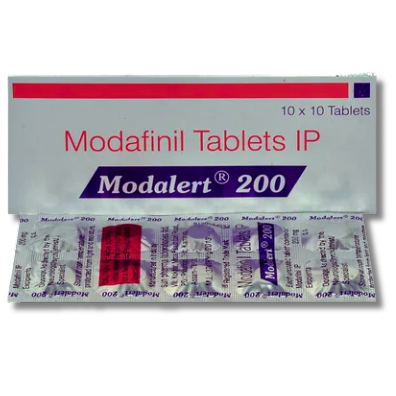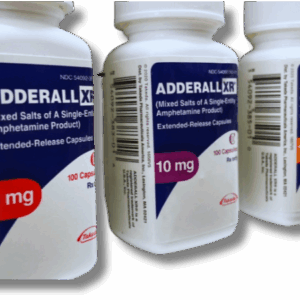Modafinil: All useful information in 2025
Original price was: £2.79.£1.79Current price is: £1.79.
Description
Modafinil is a prescription medicine that helps people stay awake if they have sleeping problems like narcolepsy, sleep apnoea, or shift work sleep disorder.
It’s known for promoting wakefulness without the high risk of addiction that comes with other stimulants.
Doctors sometimes suggest modafinil when tiredness makes daily life tough to manage.
Many people find modafinil useful, but it can bring serious side effects and may interact with other medications.
There are real risks, especially for pregnant women, and it can reduce the effectiveness of hormonal contraceptives.
Getting the facts about modafinil helps people make safer health choices, even if the decision isn’t always straightforward.
Key Takeaways
- Modafinil helps manage severe sleepiness in certain medical conditions.
- It has possible side effects and safety concerns users should know.
- Anyone taking modafinil should follow medical advice carefully.
What Is Modafinil?
Modafinil is a prescription medicine used to help people stay awake, especially when they deal with certain sleep disorders.
This medication comes in several brand and generic forms and works by affecting brain chemicals related to wakefulness.
Brand Names and Generic Variants
Modafinil is sold under brand names like Provigil, Alertec, Modavigil, and Modalert.
All these brands use modafinil as the active ingredient.
Generic versions are available too, and they’re usually more affordable but contain the same main medicine.
There’s also armodafinil (brand name Nuvigil), a similar drug with a slightly different chemical structure.
Brands and generics might differ in price, inactive ingredients, or packaging, but the effects in the body are pretty much the same if you take the same dose.
All these forms require a doctor’s prescription.
Drug Class and Mechanism of Action
Modafinil is a wakefulness-promoting agent and sometimes gets labeled as a stimulant.
It works differently from traditional stimulants like amphetamines, though.
The drug changes how certain neurotransmitters—like dopamine, norepinephrine, serotonin, and histamine—work in the brain.
By increasing or shifting these chemicals, modafinil helps people stay awake and alert.
It doesn’t cure sleep disorders or fix the root cause, but it helps people manage excessive daytime sleepiness.
Forms, Dosage, and Administration
Modafinil comes as an oral tablet.
Common strengths are 100 mg and 200 mg.
For adults with narcolepsy or obstructive sleep apnoea, doctors usually recommend 200 mg once a day, taken in the morning.
For shift work sleep disorder, people usually take it about an hour before starting work.
Swallow tablets with water; you can take them with or without food.
Only use modafinil as prescribed, and don’t go over the recommended dose.
Medical Uses and Benefits
Modafinil is prescription-only and approved for managing certain sleep disorders.
It also gets used “off-label” in situations where people want better concentration or less fatigue, though that’s a bit of a gray area.
Approved Indications and Conditions Treated
The FDA and UK health agencies have approved modafinil for specific conditions.
These are narcolepsy, shift work sleep disorder, and obstructive sleep apnoea.
For these patients, modafinil helps reduce excessive daytime sleepiness and supports better wakefulness during the day.
People with narcolepsy use it to avoid sudden sleep attacks that mess up daily life.
Those with shift work sleep disorder may take it to fight tiredness from working odd hours.
For obstructive sleep apnoea, it’s used when sleepiness sticks around even after treatments like CPAP.
Summary of Approved Uses
| Condition | Main Benefit |
|---|---|
| Narcolepsy | Reduces sudden sleep attacks |
| Shift work sleep disorder | Improves alertness during irregular shift work |
| Obstructive sleep apnoea | Manages sleepiness despite other treatments |
Modafinil isn’t approved for children.
It’s also different from traditional stimulants like Ritalin or Adderall and has a lower risk of addiction.
Off-Label Uses and Cognitive Enhancement
Doctors sometimes prescribe modafinil “off-label” for things not officially approved.
Examples include treating ADHD, fatigue from depression or multiple sclerosis, and as a cognitive enhancer.
Some students and professionals try off-label use for better focus, productivity, or memory.
Research suggests modafinil might help with mental performance, but people still debate these benefits.
It’s also sometimes used for tiredness in bipolar disorder and other mental health conditions, though the evidence is pretty limited.
There are risks, especially in children and those with certain psychiatric histories.
- Modafinil is not a cure for ADHD, and using it in kids is discouraged because of side effects.
- Doctors weigh risks and possible benefits before prescribing it off-label.
- Any off-label use should be under strict medical guidance.
Risks, Side Effects, and Safety Considerations
Modafinil can cause mild or serious health issues.
Certain groups—like pregnant women or people on other medications—face higher risks.
Common and Serious Side Effects
The most common side effects are headaches, nausea, dizziness, dry mouth, and insomnia.
Some people might feel anxious, nervous, or agitated.
Appetite changes and stomach issues like diarrhoea can happen too.
More serious reactions include serious skin rashes (like Stevens-Johnson Syndrome).
There have been rare but severe allergic reactions or angioedema.
Psychiatric symptoms such as confusion, hallucinations, anxiety, or psychosis can show up in sensitive people.
Heart problems like chest pain, faster heart rate, or high blood pressure may occur, especially if you already have heart issues.
There are rare reports of suicidal thoughts or behavior linked to modafinil.
Warnings, Contraindications, and Drug Interactions
Modafinil use during pregnancy raises the risk of birth defects like heart malformations.
It can interfere with hormonal contraceptives, so women should use other birth control methods during and for up to two months after taking modafinil.
People with high blood pressure, heart problems, psychiatric disorders, or a history of substance misuse should use modafinil cautiously.
Serious side effects can be worse for these groups.
It interacts with drugs like Ritalin, omeprazole, and even caffeine, which can raise side effect risks or reduce effectiveness.
Modafinil isn’t considered highly habit-forming, but misuse, overdose, or withdrawal can still cause problems.
Modafinil passes into breast milk, so breastfeeding isn’t recommended while taking it.
If you’re in the UK and considering modafinil, check in with your healthcare provider regularly to stay safe and adjust treatment as needed.
Frequently Asked Questions
Modafinil and other wakefulness-promoting agents get used for specific medical reasons and work differently from typical stimulants.
They have unique side effects, dosing, and are usually part of treatment for diagnosed conditions.
What are the potential side effects of taking nootropic drugs?
Common side effects include headache, nausea, dizziness, and trouble sleeping.
Some people also deal with anxiety, nervousness, or stomach problems.
Rare but serious effects can include skin reactions and heart issues.
How does the mechanism of action for cognitive enhancers operate?
Modafinil changes brain chemicals that control wakefulness by influencing neurotransmitters like dopamine and norepinephrine.
It increases alertness, but not with the strong jolt you’d get from amphetamine-like drugs.
For which conditions is the prescription of wakefulness-promoting agents recommended?
Doctors most often prescribe modafinil for narcolepsy, sleep apnoea, and shift work sleep disorder.
It’s not meant for regular tiredness or general fatigue unless there’s a specific diagnosis.
Under which classification do wakefulness-promoting medications fall?
In the UK, drugs like modafinil are prescription-only medicines (POMs).
They’re classed as central nervous system stimulants but act differently from typical amphetamines.
What dosing guidelines should be followed for the administration of cognitive enhancement medication?
A common starting dose is 200 mg per day, taken once in the morning or split into two smaller doses.
It’s important to follow your doctor’s instructions and not exceed the prescribed amount.
Is the use of stimulant medications in the management of ADHD considered effective?
Doctors often turn to stimulant medications like methylphenidate to help manage ADHD symptoms. These meds can really improve attention and curb impulsive behavior, at least for many people.
Modafinil isn’t usually the go-to choice. Still, some folks might try it if the usual options just don’t work out or aren’t a good fit.


